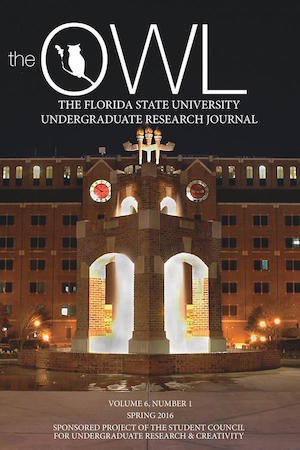Communication in Routines Between Caregivers and Children with Down Syndrome
Abstract
The purpose of the study was to describe the communication of toddlers with Down syndrome in everyday routines with their caregivers within four intervention time points. Archival video data of caregiver-implemented language intervention from the KidTalk Tactics Project were used to describe the communication of three children, ages 12 to 20 months, measured at four time periods across caregiving, pre-academic, and play routines. Increases in the frequency of single words and multiple word phrases were evident for all children. Variability in the frequency of communication acts in different routines were noted. The results of this study contribute to the expanding literature on caregiver-implemented intervention in natural environments by examining the unique profiles of toddlers with Down syndrome and the context in which they participated with their caregivers.
References
S .F. Warren, S.L. Bredin-Oja, M. Fairchild, L.H. Finestack, M.E. Fey, and N.C. Brady, Responsivity Education/Prelinguistic Milieu Teaching (Baltimore, Maryland: Paul H. Brookes Publishing Co., Inc., 2006) 47.
Juliann Woods, Shubha Kashinath, and H. Goldstein, “Effects of Embedding Caregiver Implemented Teaching Strategies in Daily Routines on Children’s Communication Outcomes,” Journal of Early Intervention 2004: 175.
M. Roberts and Aim Kaiser, “The Effectiveness of Parent-Implemented Language Interventions: A Meta-Analysis,” American Journal of Speech-Language Pathology 2011: 180.
D. Patterson and I. Lott, Etiology, Diagnosis, and Development in Down Syndrome, (Baltimore, Maryland: Paul, H. Brookes Publishing Co., Inc., 2008) 3.
J.E. Roberts, C. Stoel-Gammon, and E.F. Barnes, Phonological Characteristics of Children with Down Syndrome or Fragile X Syndrome, (Baltimore, Maryland: Paul, H. Brookes Publishing Co., Inc., 2008) 143.
Position Statement, “Roles and Responsibilities of Speech-Language Pathologists in Early Intervention,” American Speech-Lru1guage-Hearing Association, 2008.
K.N. Cole, M. Maddox, and YS. Lim, eds., Language is the Key: Constructive Interactions Around Books and Play, (Baltimore, Maryland: Paul H. Brookes Publishing Co., Inc., 2006) 149.
A. Sterling and S.F. Warren, Communication and Language Development in Infants and Toddlers with Down Syndrome or Fragile X Syndrome, (Baltimore, Maryland: Paul, H. Brookes Publishing Co., Inc., 2008) 53.
G. Mahoney and A. Neville-Smith, “The Effects of Directive Communications on Children’s Interactive Engagement Implications for Language Intervention,” Topics in Early Childhood Special Education 1996: 236.
Juliann Woods and Shubha Kashinath, “Expanding Opportunities for Social Communication into Daily Routines,” Journal of Early Childhood Services 2007: 137.
M. Raab, “Interest-based Child Participation in Everyday Learning Activities,” Insights into Early Childhood and Family Support Practices 2005.
C.J., Dunst, M.B. Bruder, C.M. Trivette, D. Hamby, M. Raab, and M. McLean, “Characterstics and Consequences of Everyday Natural Learning Opportunities,’’ Topics in Early Childhood Special Education 2001: 68.
P. Peterson, J.J. Carta, and C. Greenwood, “Teaching Enhanced Milieu Language Teaching Skills to Parents in Multiple Risk Families,” Journal of Early Intervention 2005: 94.
G. Mahoney, F. Perales, B. Wiggers, and B. He1man, “Responsive Teaching: Early Intervention for Children with Down Syndrome and Other Disabilities,” Down Syndrome Research and Practice 2006: 18.
T.B. Hancock and Aim Kaiser, Enhru1ced Milieu Teaching, (Baltimore, Maryland: Paul, H. Brookes Publishing Co., Inc., 2006) 203.
Ann Kaiser, T.B. Hancock, and J.P. Nietfeld, “The Effects of Parent-Implemented Enhanced Milieu Teaching on the Social Communication of Children who have Autism,” Journal of Early Education and Development 2000: 423.
Amy Wetherby and B.M. Prizant, CSBS DP Manual: Communication and Symbolic Behavior Scales Developmental Profile (1st ed.), (Baltimore, Maryland: Paul. H. Brookes Publishing Co., Inc., 2002).
E.M. Mullen, Mullen Scales of Early Learning Manual, (Circle Pines, MN: American Guidance Service, 1995).
I.L. Zimmennan, VG. Steiner, and R.V Pond, Preschool Language Scales (4th ed.), (San Antonio, TX: The Psychological Corporation, 2012).
L. Penson, VA. Marchman, D.J. Thai., P.S. Dale, J.S. Reznick, and E. Bates, MacAtthur-Bates Communicative Development Inventories: User’s Guide and Technical Manual (2nd ed.), (Baltimore, Maryland: Paul. H. Brookes Publishing Co., Inc., 2007).
Shubha Kashinath, Juliann Woods, and H. Goldstein, “Enhancing Generalized Teaching Strategy Use in Daily Routines by Parents of Children with Autism,” Journal of Speech, Language, and Hearing Research 2006: 466.
R.E. Owens, Language Development: An Introduction (8th ed.), (Upper Saddle River, NJ: Pearson Education, Inc., 2011).
Downloads
Published
Issue
Section
License
All works published in The Owl are published under a Creative Commons Attribution, Non-Commercial, Share-Alike (CC-BY-NC-SA) license. The author retains copyright.

